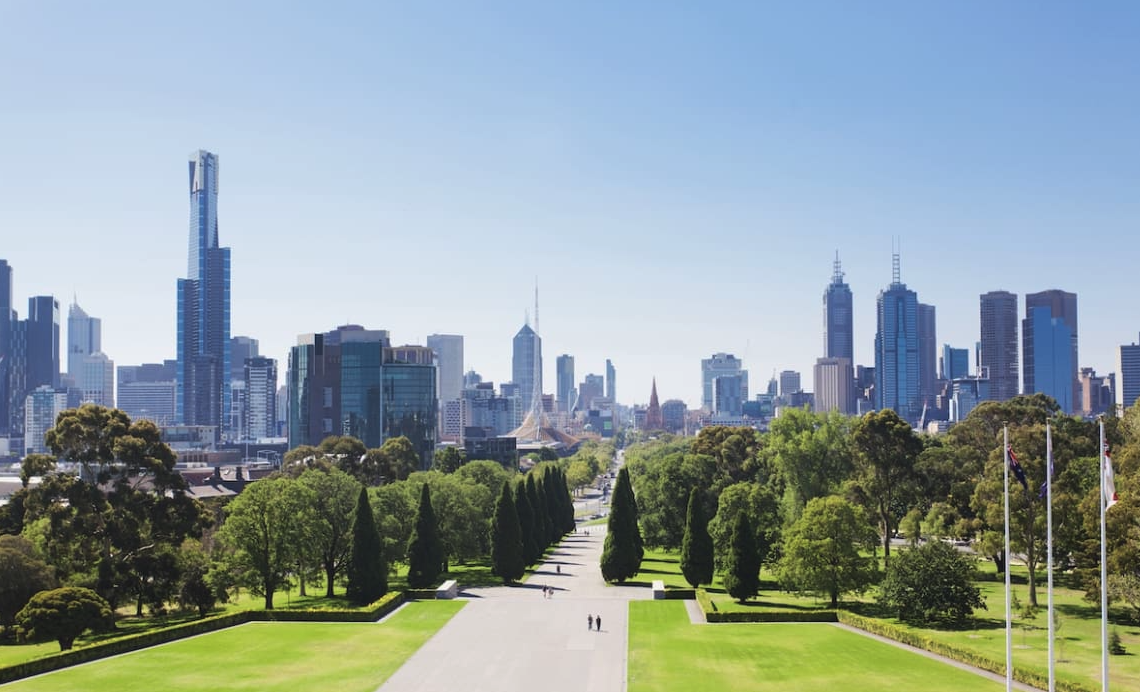Revealed: Sydney’s Most Expensive Suburbs to Rent
Sydney’s rental market is hitting new highs, with prime suburbs now topping $2,000 a week.
Sydney is well and truly on the world map when it comes to luxury residential property, rivalling—and even beating—the likes of Tokyo and Dubai in terms of price per square metre.
The harbour capital has also proven itself to be a powerhouse for luxury residential rental growth. Knight Frank’s Prime Global Rental Index Q4 2024 showed prime rents across Sydney grew 4.7 per cent over 2024, the fifth-highest growth globally.
This has pushed several of Sydney’s top suburbs over the $2,000 per week median rent mark for a house, with surrounding areas fast approaching the milestone.
We’ve wrapped up the most expensive suburbs to live in across Sydney, with data sourced from property data analytics firm CoreLogic.
1. Vaucluse: Median purchase: $8.69m; Median rent: $2,198
Vaucluse has consistently ranked as Sydney’s most expensive suburb for rental properties over the past few years, even with annual rents contracting by over 14 per cent. What sets it apart is its unique geography—it’s the only suburb in the Eastern Suburbs that stretches from the harbour to the ocean. Homes in Vaucluse top the price charts because most either boast Sydney Harbour views or enjoy uninterrupted outlooks over the Pacific Ocean.
The Neighbourhood
While most Eastern Suburbs have one main beach, Vaucluse is dotted with several secluded spots, such as Parsley Bay, Milk Beach, and the recently reopened Shark Beach, which had been closed for several years due to retaining wall repairs.
2. Dover Heights: Median purchase: $6.38m; Median rent: $2,024
Vaucluse’s immediate southern neighbour, Dover Heights, is the only other suburb in Sydney with a median house rental over $2,000. Dover Heights hugs the cliffs and is well known as one of the most tightly held house markets in the Eastern Suburbs. The homes are perched on the cliffside, and the majority of houses in the area have at least four bedrooms, pushing up prices.
The Neighbourhood
While there are no beaches to speak of, its elevated position provides some of the highest views of Sydney Harbour. It is also home to the Federation Cliff Walk, a five-kilometre clifftop walk with postcard views of the Pacific Ocean from Dover Heights to Watsons Bay.
3. Bronte: Median purchase: $5.64m, Median rent: $1,963
Bronte takes out the title of the most expensive of the ‘typical’ Eastern Suburbs beachside suburbs. Just 30 per cent of homes in Bronte are separate houses, with nearly half being apartments. Houses in the rental pool are typically original homes dating back to the 1960s that have been renovated over the last decade or so.
The Neighbourhood
Bronte has long been a favourite due to its more relaxed beachside lifestyle compared to the busier Bondi, although Bronte is no longer a ‘hidden gem’ anymore. It offers numerous lifestyle perks, from a small high street lined with shops and cafés to several eateries located by the beach, which also features one of the best natural ocean pools in the Eastern Suburbs.
4. North Bondi: Median purchase: $4.81m; Median rent: $1,932
North Bondi has become a hotbed of new homes, with frequent sales of either original houses or older apartment complexes being bought to be demolished and replaced by brand-new contemporary builds. There’s a mix of original cottages and new homes in the rental pool, the latter fetching over $7,000 a week.
The Neighbourhood
North Bondi is situated in a small pocket, just south of Dover Heights and north of Bondi Beach. Starting at the Ben Buckler Peninsula, near where Campbell Parade transitions into Military Road, North Bondi is one of the most secluded areas on the coastline, with Hastings Parade, Brighton Boulevard, and Ramsgate Avenue all offering a southward view over the sand.
5. Balgowlah Heights: Median purchase: $4.13m; Median rent: $1,930
Balgowlah Heights is the most expensive suburb to rent a house in the Northern Beaches. Land sizes tend to be much larger, and you get more for your money in the area compared to the East.
The Neighbourhood
Balgowlah Heights is the harbourside southern neighbour of Balgowlah. The Sydney Harbour National Park occupies half of the leafy suburb, part of the Manly to Spit Bridge Walk, and is home to Tania Park, with a children’s playground and sporting facilities overlooking Manly Cove. Nestled on the northern shores of Sydney Harbour, it offers a serene and leafy environment.
6. Bellevue Hill: Median purchase: $10.63m; Median rent: $1,917
Bellevue Hill stands as one of Sydney’s most prestigious suburbs and has some of the largest houses by median land size.
Given the large gap between median purchase price and median rental price, it is no wonder renters want to live among $10m homes and pay under $2,000 a week, when a $10m purchase means $2m deposit, over $500k in stamp duty, and roughly $12,000 a week in repayments.
Most mansions will never make it to public rental sites and are often snapped up by Hollywood stars, musicians, or even royalty when they visit Australia.
The Neighbourhood
One of the biggest drawcards for those living in Bellevue Hill is the proximity to two of the country’s top schools. While there are no catchment areas for private schools, Cranbrook School and Scots College will always draw affluent families to the suburb. Scots fees start at around $30,000 per annum from Year One and reach nearly $50,000 by Year 12.
Sydney’s Cheapest Suburb: Tregear; Median purchase: $782,000; Median rent: $544
The cheapest suburb to rent in Sydney is Tregear, located on the outskirts of Mt Druitt, approximately 50 km west of the CBD. The median house rental is $544, which is four times cheaper than renting a house in Vaucluse. The median house price in Tregear is $782,000, around 12 times less than Vaucluse.
Sydney’s Best Suburb: Point Piper
If money were no object, it’s hard to look past Sydney’s most affluent suburb as the top pick for the best place to live in the city, in my opinion.
It doesn’t even have an actual median house price, simply because so few properties change hands. Last year, just five houses sold, ranging from $8 million to $51.5 million. Homes on the best streets offer gun-barrel views of the Harbour Bridge and the Opera House, while the cosmopolitan Double Bay next door provides all the lifestyle conveniences.
Records keep falling in 2025 as harbourfront, beachfront and blue-chip estates crowd the top of the market.
A divide has opened in the tech job market between those with artificial-intelligence skills and everyone else.
The 2026 McGrath Report warns that without urgent reforms to planning, infrastructure and construction, housing affordability will continue to slip beyond reach for most Australians.
Australia’s housing market has reached a critical juncture, with home ownership and rental affordability deteriorating to their worst levels in decades, according to the McGrath Report 2026.
The annual analysis from real estate entrepreneur John McGrath paints a sobering picture of a nation where even the “lucky country” has run out of luck — or at least, out of homes.
New borrowers are now spending half their household income servicing loans, while renters are devoting one-third of their earnings to rent.
The time needed to save a 20 per cent deposit has stretched beyond ten years, and the home price-to-income ratio has climbed to eight times. “These aren’t just statistics,” McGrath writes. “They represent real people and real pain.”
McGrath argues that the root cause of Australia’s housing crisis is not a shortage of land, but a shortage of accessibility and deliverable stock.
“Over half our population has squeezed into just three cities, creating price pressure and rising density in Sydney, Melbourne and Brisbane while vast developable land sits disconnected from essential infrastructure,” he says.
The report identifies three faltering pillars — supply, affordability and construction viability — as the drivers of instability in the current market.
Developers across the country, McGrath notes, are “unable to make the numbers work” due to labour shortages and soaring construction costs.
In many trades, shortages have doubled or tripled, and build costs have surged by more than 30 per cent, stalling thousands of projects.
Need for systemic reform
McGrath’s prescription is clear: the only real solution lies in increasing supply through systemic reform. “We need to streamline development processes, reduce approval timeframes and provide better infrastructure to free up the options and provide more choice for everyone on where they live,” he says.
The 2026 edition of the report also points to promising trends in policy and innovation. Across several states, governments are prioritising higher-density development near transport hubs and repurposing government-owned land with existing infrastructure.
Build-to-rent models are expanding, and planning reforms are gaining traction. McGrath notes that while these steps are encouraging, they must be accelerated and supported by new construction methods if Australia is to meet demand.
One of the report’s key opportunities lies in prefabrication and modular design. “Prefabricated homes can be completed in 10–12 weeks compared to 18 months for a traditional house, saving time and money for everyone involved,” McGrath says.
The report suggests that modular and 3D-printed housing could play a significant role in addressing shortages while setting a new global benchmark for speed, cost and quality in residential construction.
Intelligent homes
In a section titled Weathering the Future: The Power of Smart Design, the report emphasises that sustainable and intelligent home design is no longer aspirational but essential.
It highlights new technologies that reduce energy use, improve thermal efficiency, and make homes more resilient to climate risks.
“There’s no reason why Australia shouldn’t be a world leader in innovative design and construction — and many reasons why we should be,” McGrath writes.
Despite the challenges, the tone of the 2026 McGrath Report is one of cautious optimism. Demand is expected to stabilise at around 175,000 households per year from 2026, and construction cost growth is finally slowing. Governments are also showing a greater willingness to reform outdated planning frameworks.
McGrath concludes that the path forward requires bold decisions and collaboration between all levels of government and industry.
“Australia has the land, demand and capability,” he says. “What we need now is the will to implement supply-focused solutions that address root causes rather than symptoms.”
“Only then,” he adds, “can we turn the dream of home ownership back into something more than a dream.”
Australia’s market is on the move again, and not always where you’d expect. We’ve found the surprise suburbs where prices are climbing fastest.
ABC Bullion has launched a pioneering investment product that allows Australians to draw regular cashflow from their precious metal holdings.




















